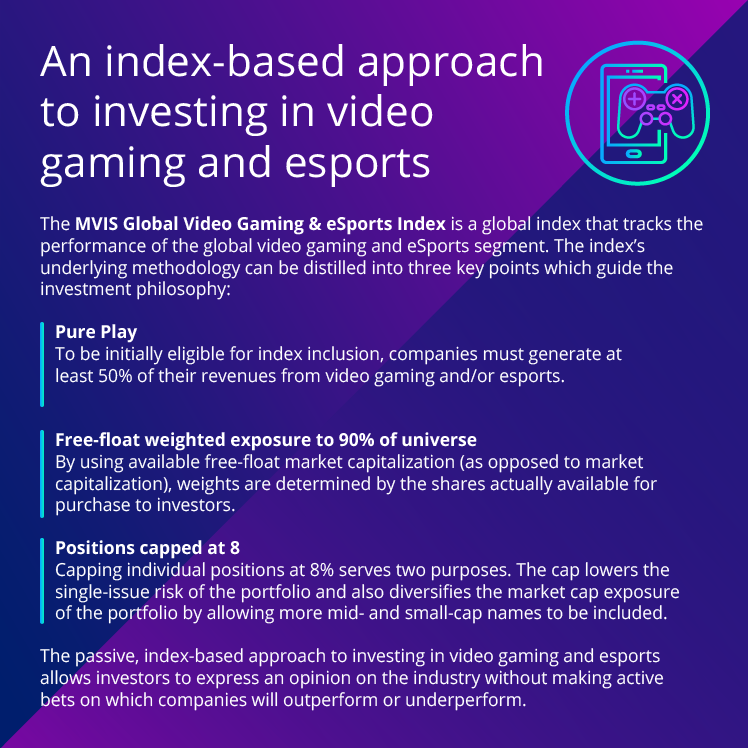Written by: John Patrick Lee
How Esports Fits Into the Gaming Industry
Over the last few years, media coverage of esports, has reached a fever pitch. News of sold-out stadiums, multi-million dollar franchise fees for professional teams and big-brand sponsorship deals have driven the esports mania narrative. However, comparing esports revenues to the broader video game industry can help keep things in perspective.
According to Newzoo, out of the $159 billion in revenue that the global video gaming industry is expected to generate in 2020, roughly $1.1 billion will be generated by esports. In other words, the global video gaming industry should generate around 144 times the revenue of the global esports industry in 2020.
But what about all the front-page articles about the esports boom? It’s easy to conflate the two industries. At VanEck, we view the esports industry as a sub-industry within the broader video game segment. Video game companies, in turn, are a convergence of technology and communication services. The video gaming and esports industries encompass a wide range of companies, from video game publishers (Activision) to semiconductor companies (Nvidia) to media companies (HUYA).
Evolving Business Models to Maximize Revenue Lifespan
Game publishers are also embracing new business models for games to maximize revenue potential for titles. The “game as a service” model encapsulates this phenomenon. Rather than a one-time transaction, publishers are moving towards an ongoing subscription-based model with a much longer time horizon of purchases from a single user.
In the traditional business model, known as “game as a product”, a game publisher develops a game and then sells it to the consumer for a single, revenue-generating fee. After the consumer buys the game, the video game publisher has to develop another video game or add-on to generate additional revenues from that consumer.
In the mid-2000s, this changed when video game publishers began testing the “game as a service model”, allowing consumers to bypass the initial payment for the game in exchange for an ongoing fee allowing continual access. There are a number of different ways the game publisher can generate revenues under this model, including game subscriptions, micro-transactions and season passes.
Insert Coin to Play: Publishers Become League Operators
Over the past few years, video game publishers have invested millions of dollars in developing, launching and running professional esports leagues. Previously, esports leagues were run by independent third parties separate from the publishers who make the games. We believe the end result of this development is that video game publishers are now primed to gain the most from the esports phenomenon.
Publishers own the rights to the games played in competition, as well as the broadcasting rights, which are sold to media and communication services companies (like Twitch and Facebook). According to Goldman Sachs, media rights are expected to grow from representing around 20% of all esports revenues to 40% by 2022.1 This means that, after factoring in other revenue sources like sponsorship and game publisher fees, video game publishers are in a position to potentially own the majority of revenues coming from esports.
An Index-Based Approach to Investing in Video Gaming and Esports



